Zero Hour: Crisis in Time #1 (September 1994)
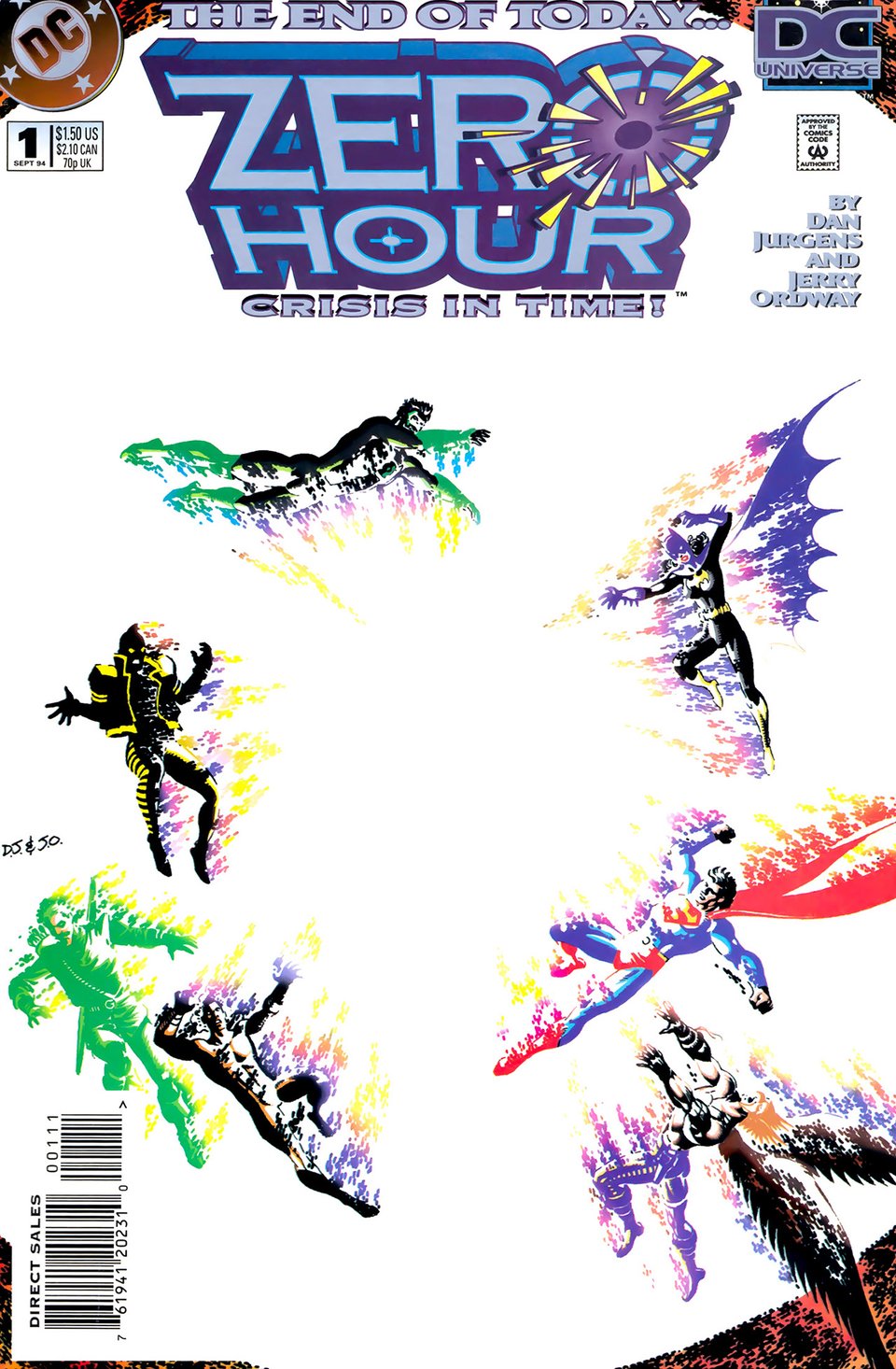
Zero Hour: Crisis in Time #1 (September 1994)
In this issue: Superman gets punched! The real villain is revealed! And, oh yeah, EVERYONE DIES.
We open with Supergirl, Steel, Alternate Timeline Batgirl, and a distraught Guy Gardner coming out of a big hole in reality in what used to be Coast City. Guy is muttering something about how he “just saw the woman I loved die” (which, if you’re following @greenlantern94to04, you also just saw in the latest post about Guy Gardner: Warrior #24). More of these “entropy fissures” pop up all around and one of them gobbles up Steel, despite Guy’s efforts. It’s been a humbling day for the once obnoxiously arrogant Guyster.

While Guy curses Extant for causing all this, Extant is like “The hell is causing all this?” Turns out he’s not the one opening all those fissures. That’s when the mysterious glowing green figure from the end of last issue shows up and demonstrates that Extant isn’t the top dog here (although you could still use a word for “canine” to describe him in this page). The Actual Big Bad chastises Extant for “forgetting who’s in charge here” and acting like he’s the villain of this comic just because he’s all over the covers, ads, preview blurbs, and, you know, the comic itself. Until now, anyway.
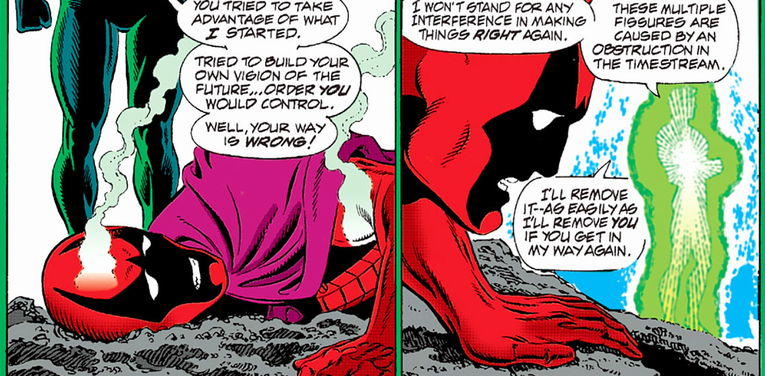
The mystery villain’s next stop is the 30th century, or at least the tiny Pocket (Earth) of it that still survives. The Time Trapper has stashed a few Legion of Super-Heroes members (including his own past selves, Cosmic Boy and Cosmic… Man?) in there to prevent them from being eaten by entropy, but they end up fading into nothingness anyway. Then, TTT is easily taken down by the mystery character again – yep, it was him who did that at the start of ZH #4 (the first issue), not Extant. In fact, TTT even does the exact same pose while being blasted just to make it clear that it’s by the same guy.
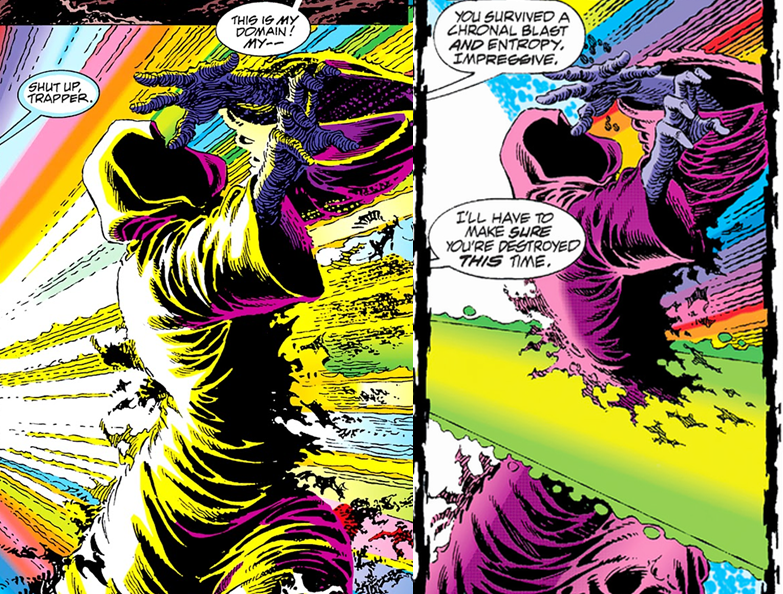
(And also because Dan Jurgens drew six books this month and deserved a little break here.)
Back in the 20th century, everyone born in the past or future starts disappearing as their eras of origin are deleted from history. That means Impulse (30th century), Booster Gold (25th), and the old folks at the Justice Society (early 20th). Before being wiped out, however, Jay “First And Apparently Only Surviving Flash” Garrick manages to convince his old friend The Spectre that they’ve finally reached the part of the crossover where he decides to get involved. (I only said decides, though; he’ll actually do it next issue.)
As time gets erased, Metron takes Superman and a few others outside of it: meaning, to Vanishing Point. The heroes need someone who can easily ride the waves of time, so it’s too bad that Waverider died last issue. Luckily, they still have his alternate human version Matthew Ryder, so they just turn him all Waverider-y using convenient comic book science. (It’s kinda funny that no one asks for Matthew’s opinion on this; he’s just like “Oooh, I don’t know about thi– whelp, guess I’m Waverider now!”)
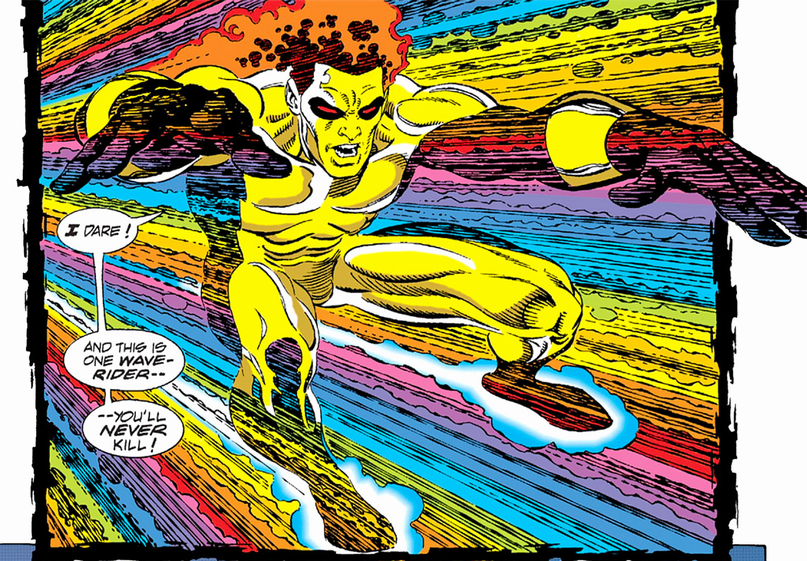
In the present, the rapidly declining number of surviving heroes (Batman, RIP… ped apart by a time hole) fight Extant with the help of Waverider 2… and NO help from Wonder Woman, since she’s busy delivering Power Girl’s baby. At one point, Extant tries to de-age The Atom into primordial goop, but Waverider 2 stops that process when Atom is merely at 18 years old (ironic, considering The Other Atom died from being aged into bones back in ZH #3 (the second issue)).
Just when the heroes are about to defeat Extant, someone punches Superman himself into the ground. Everyone looks in shock as we learn that it’s none other than…
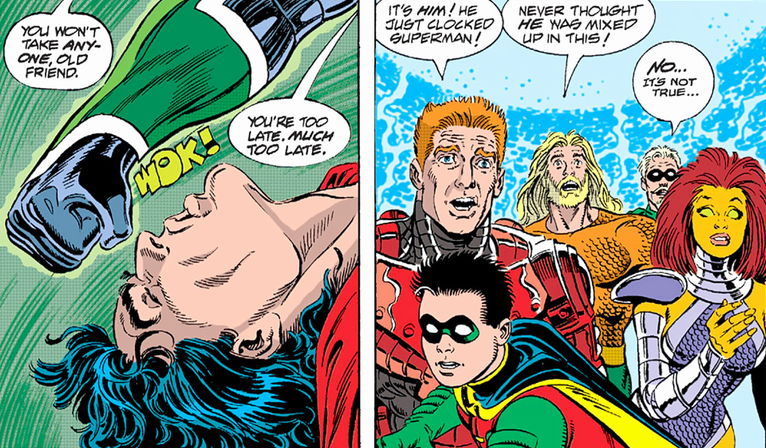

Freakin’ Psi– I mean, Hal Jordan! Wait, isn’t Hal a good guy? Nice, he can help bring down the mystery villain! The day is saved!
Wait, no. Hal is the mystery villain. He’s taken the name Parallax and decided that the universe needs to be restarted from zero to correct injustices like the destruction of Coast City. Oliver Queen / Green Arrow can’t believe that his old friend Hal is the one who just wiped away 99.999999…% of all of humanity across history, but Hal says that yep, it’s him alright – and proves it by wiping out the rest now. Everything fades to white.
As he fades away too, Hal says: “Who knows? Maybe one universe… one world – won’t be enough.” But right now, there’s no universe and no worlds. Just nothing. THE END. OF EVERYTHING.
Except this post, because there’s more from Don Sparrow!
Art-Watch (by @donsparrow):
Probably the best cover of the series as some of DC’s most recognizable heroes disintegrate into the widening wave of nothingness. Having so little of the image inked in pure blacks was very rare for the time and gives the cover a distinguishing look on the shelves.
Inside the issue, the art keeps up the excellent standard of quality with a stunning shot of Supergirl soaring into action.
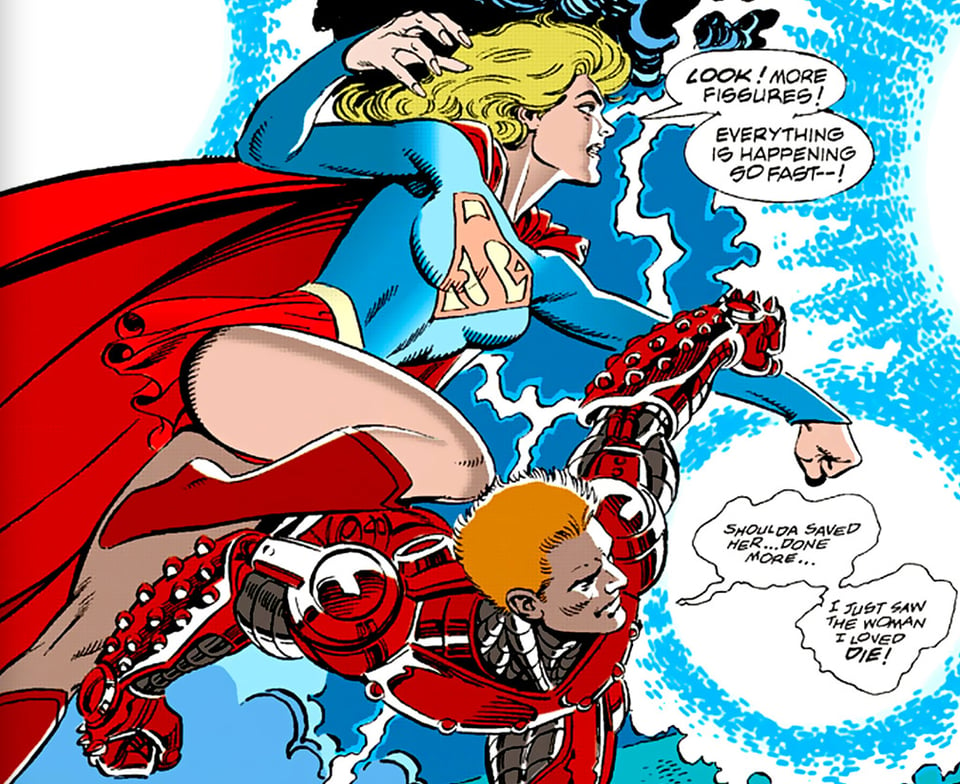
Guy Gardner is among the characters most consistently drawn in this book, so he feels like a real person. The shot of him lit from below as he watches Steel disappear is particularly well rendered.
I love Jurgens’ use of long tall panels, and the one of the Greatest Generation Flash huffing his way from New York City is a good one and gives a real sense of his effort. On the next page, the Spectre hissing through clenched teeth is one of the best images I’ve ever seen of the character (second only, perhaps, to his holy cries in issue #7 of the original Crisis—like this page, inked by the incomparable Jerry Ordway). I really am trying to restrain myself from commenting on each page, but it’s hard with the art being this good throughout. Page 18 is almost all highlights, with Batgirl jumping into the fray (in a pose reminiscent, to me at least, of her Million Dollar Debut in Detective Comics #359) and a great shot of Green Arrow taking aim at Extant (though his inner monologue could use an edit).
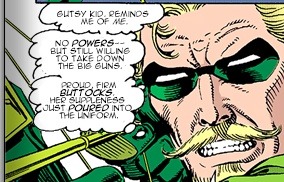
[Max: DC, please incorporate Don’s addition to the next printing.]
The new and improved Waverider’s sudden appearance is a great visual, but nothing compares to a couple pages later where we see who has the power to KO Superman. Designed by perhaps my favourite Green Lantern artist Darryl Banks, Parallax Hal Jordan’s costume has always been a favourite of mine (in spite of its ‘90s hallmarks like the giant shoulder armour), and it’s never looked better than here (though for some reason, this Hal has lost his Reed Richards white hair at the temples). Just so we fully understand he’s a villain, he defies not only all of DC’s heroes, but the late great Jim Croce himself by not only tugging on, but—get this–stepping on Superman’s cape. Nihilo sanctum estne, Hal Jordan?
I know from the comments we’re getting that there’s still a lot of bad feelings out there for this mini-series. Maybe knowing the continuity changes that came later to explain this all away made it more palatable but I have to tip my hat to what a huge swing it is revealing the villain this way, especially keeping him under wraps for months as Kyle established himself as the new Green Lantern. And the art goes an incredibly long way. Honestly, apart from Bryan Hitch’s work on The Authority 5 years later, it’s hard to think of any non-fully painted comic that had such dynamic realism.
SPEEDING BULLETS:
The Steel/Supergirl/Batgirl/Gardner team up came immediately from a needlessly cruel set up by Extant, where they were forced to see the active destruction of Coast City as they chased Extant through time as he toyed with them over in Guy Gardner: Warrior #24. Most tragic of all, Guy temporarily lost his eyebrows in the battle. [Max: NoOoOoOoOoOoO!]
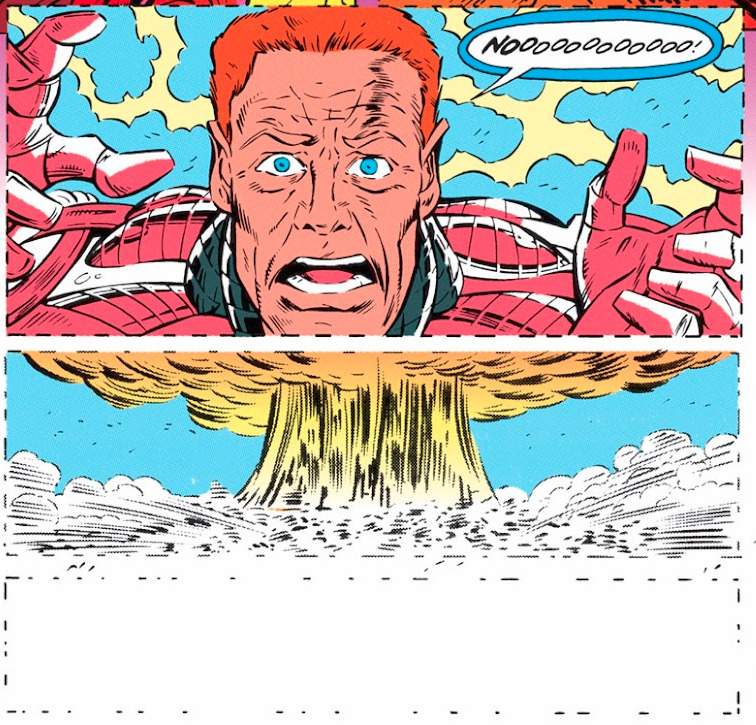
There’s a sense of diminishing returns in big event comics when characters die. It’s impactful when one or two big names fall in a story, but sometimes as very popular characters die (in this case, Steel, Jay Garrick and no less than BATMAN) as a reader you start to realize—oh, none of this matters, they’re gonna do a reset, there’s no way they’d leave characters this financially important stay dead for long. [Max: At least Jay got a good arc. Batman is kind of an ineffective chump in this series… and as a Superman loyalist, I approve of that narrative choice.]

The whole storyline of Power Girl’s labour is hilariously out of place here. Purportedly she went to NYC to help, but all she really accomplished was taking one of the big guns (Wonder Woman) out of the arsenal (confirmed by both Impulse and Booster saying there are more important things to worry about). I’m also a bit confused as to why she has to deliver on the ground. She’s clearly on some kind of shiny, gurney-like thing on page 8, but Wonder Woman’s elevated knee (and Captain Atom looking down on them) seems to show she’s on the floor. But why? Also, Wonder Woman comes from an island with exactly one childbirth in the last two thousand years or so—why is she pulling rank on Captain Atom for delivering PG’s baby?
Batman seems uncharacteristically broken up about Impulse “dying”, especially since they just met. [Max: I know I just called him a chump, but I think Batman can be forgiven for still being sensitive about teenage sidekicks dying in front of him.]
We get more of that weird pattern in this story, of a character (Geo-Force) boldly declaring they want to do something about the crisis, and then being told, no, “wait until we’re organized” (by Hawkman). For a quickly developing disaster, we’re losing quite a lot of space with those kinds of exchanges, though I suppose they have them in order to get more characters into speaking parts.

Metron looks so consistent throughout, he must be based off photo reference of an actor. Who do you guys think? Jeremy Irons is close.
I kinda love the running theme of Wonder Woman snapping at ineffectual Justice Leaguers, first Captain Atom, then a shell-shocked and barely bandaged Aquaman. [Max: Reading the Spanish version as a kid, I was never clear on whether she was telling him to get a doctor for Power Girl or himself, on account of the whole “just got his hand eaten by piranhas” thing. It’s a bit clearer in English.]
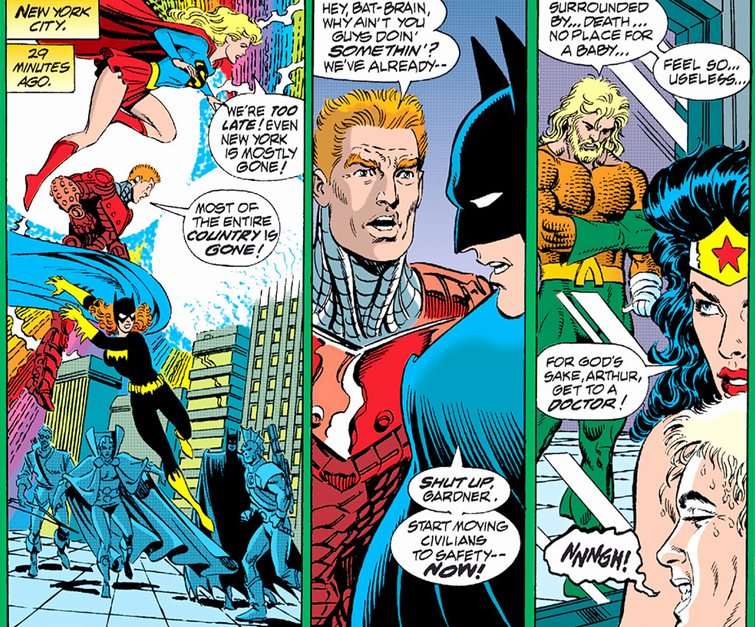
In my first (hundred) readings of this issue, I kinda glossed over the foreshadowing between Metron and Atom about how they’ll solve their “Waverider is definitely dead” problem, but it’s not exactly subtle on a closer reading.
They really just had no idea what to do with Atom at this point. Having tried turning him into a sword and sorcery guy, they now throw “he’s a teenager” at the wall to see if it sticks. At least this is the last time they’ll make fundamental changes to his mythology in a Crisis book. [Max: I’m very curious about the Teen Titans series that spun out of the Teen Atom thing, though, mainly because Jurgens/Pérez and Jurgens/Rapmund are both such great art combos. I’ll read it once we get there!]
Missed an issue? Looking for an old storyline? Check out our new chronological issue index!
This newsletter is free and always will be, but if you'd like to support us with $1 a month or more, you'll get access to extra articles about non-continuity '90s Superman stuff (shows, video games, Elseworlds, etc) and cool giveaways. Click here to become a paid supporter!
Add a comment: